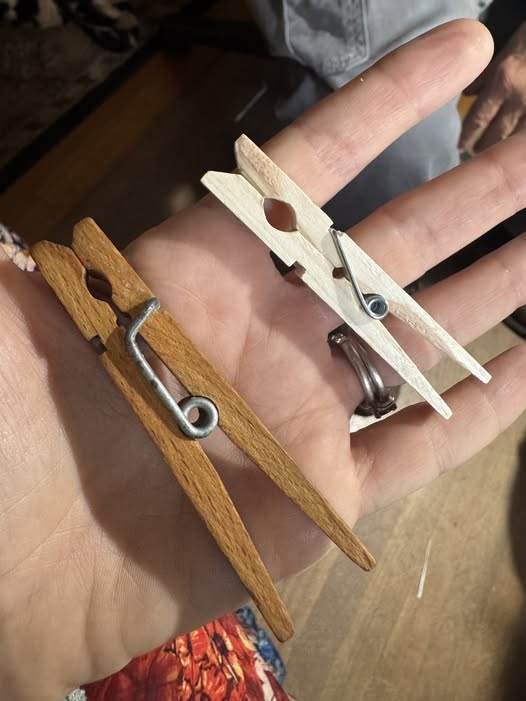This week, I visited my dad’s house, and as often happens when you step into the past with someone who’s lived it, he had a story to tell. Only this time, it wasn’t told with words alone—it was held in his hands. “Let me show you the difference between now and then in two objects,” he said, his voice tinged with both nostalgia and something else… maybe sadness, or resignation.
He brought out two clothespins: one from the 1960s, which I likely played with as a child in the 70s, and another purchased just this year, in 2025. At first glance, they seemed identical—simple wooden pegs with metal springs, designed for the humble task of hanging laundry to dry. But as my dad handed them to me, their differences became impossible to ignore.
The older clothespin, on the left, felt solid, almost alive in my hand. It was made of dense hardwood—maple or beech, perhaps—and its grain was tight and smooth. Its surface bore faint scratches and weathering, evidence of decades of use, yet it still worked perfectly. There was warmth to it, not just in temperature but in character. This small object had endured through years of sun, rain, wind, and countless loads of laundry. It carried the weight of history—not just its own, but ours too.
The newer clothespin, on the right, couldn’t have been more different. Made of soft pine or poplar, it felt insubstantial, like it might break if squeezed too hard. The wood was pale and unfinished, splintering at the edges, and the thin metal spring already seemed ready to snap. My dad mentioned wryly that it had been marketed online as “extra durable.” It was hard not to laugh bitterly at the absurdity of such a claim.
As I turned the two clothespins over in my hands, I realized I wasn’t just comparing tools; I was holding two eras side by side. One represented craftsmanship, longevity, and care. The other symbolized disposability, haste, and a world increasingly detached from permanence.
And then it hit me—the inevitability of where these objects would end up. The modern clothespin will probably find its way to a landfill within months, joining the millions of other cheaply made items destined to clutter our planet. Meanwhile, the older clothespin will likely remain functional for decades more, quietly defying time and waste.
In that moment, standing there with those two tiny pieces of wood in my palm, I felt the trajectory of history unfold before me. So much has changed since the 1960s—not just in how we make things, but in how we value them. Back then, durability mattered. People expected their belongings to last, to serve faithfully for years, even generations. Today, so many products are designed with obsolescence in mind, built to be replaced rather than repaired.
It’s easy to dismiss this shift as inevitable,
CONTINUE READING ON THE NEXT PAGE 🥰💕

